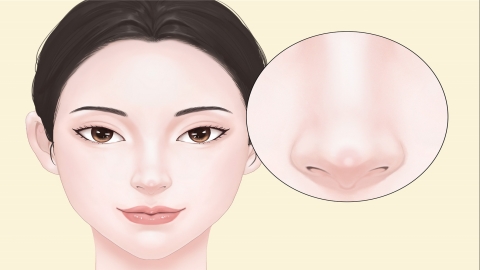How much does cartilage rhinoplasty cost?
Generally speaking, cartilage rhinoplasty refers to a surgical procedure that uses cartilage to augment the nose. In cartilage rhinoplasty, autologous cartilage is used as the implant material and surgically placed into the corresponding areas of the nose to improve its shape and contour. The general reference price for cartilage rhinoplasty ranges from 10,000 to 50,000 yuan per procedure. Noticeable improvements are typically observed 3–6 months after surgery, although symptoms such as redness, swelling, and pain may occur. The cost of cartilage rhinoplasty can be influenced by various factors including individual conditions, regional differences, surgical timing, complexity of the procedure, equipment, and techniques used. Actual pricing should be confirmed with local hospitals. Detailed analysis is as follows:

1. Individual Conditions
If the nasal foundation is relatively good and only simple tip塑形 is required, with minimal cartilage usage, the price may range from 10,000 to 20,000 yuan per procedure. However, if the nose presents multiple complex issues such as severe flatness, short nose deformity, or a bulbous tip, the price may range from 30,000 to 50,000 yuan per procedure.
2. Regional Differences
In first-tier cities where the economy is more developed, medical resources are abundant, and the cost of living is higher, the price of cartilage rhinoplasty may range from 20,000 to 50,000 yuan per procedure due to higher operational costs of cosmetic clinics. In second- and third-tier cities and below, where the economic level and consumer spending capacity are relatively lower, the medical costs are also lower, and the price generally ranges from 10,000 to 30,000 yuan per procedure.
3. Surgical Timing
Undergoing surgery during off-peak seasons or on weekdays, when hospitals and surgeons have more available time, may allow for certain promotional offers, with a general reference price ranging from 24,000 to 40,000 yuan per procedure. During peak seasons such as holidays or summer/winter vacations, when demand is high and appointment schedules are tight, there may be no discounts and prices could even slightly increase due to market supply and demand, potentially reaching 28,000 to 45,000 yuan per procedure.
4. Surgical Complexity
For simple cartilage rhinoplasty procedures involving straightforward surgical plans and basic cartilage grafting and shaping, the level of difficulty is relatively low and the operation is easier for the surgeon, with prices typically ranging from 10,000 to 20,000 yuan per procedure. However, for complex cartilage rhinoplasty requiring advanced surgical techniques and extensive experience, combined cartilage grafting, or the use of additional materials and technologies, the price may range from 30,000 to 50,000 yuan per procedure.
5. Equipment and Techniques
Using conventional surgical instruments and traditional techniques, such as standard cartilage carving and implantation methods, results in a lower price range of approximately 10,000 to 25,000 yuan per procedure. Utilizing advanced surgical equipment, such as high-definition endoscopes for precise visualization, and advanced cartilage processing and fixation instruments, may increase the price to between 25,000 and 50,000 yuan per procedure.
It is recommended to visit a qualified and正规 medical facility and undergo the procedure under the guidance of a licensed physician to ensure safety and effectiveness. Postoperatively, it is important to keep the nasal area clean and dry, and avoid external impacts or pressure on the nose.





